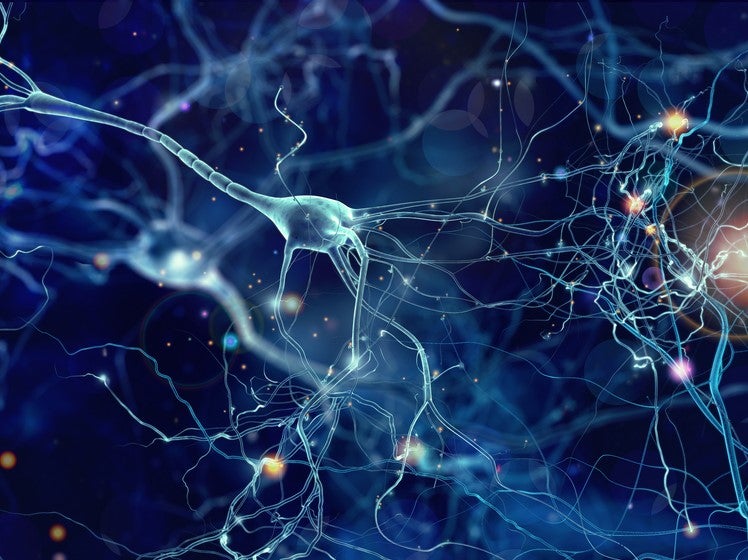
Motor neurone disease (MND) is a group of degenerative conditions that affect the motor neurons in the brain and spinal cord, so that messages from the nerves are gradually unable to reach the muscles, leading to muscle weakness, stiffening and wasting.
It is known as amyotrophic lateral sclerosis (ALS) in the US, however this is the name used in the UK for the most common type of MND; other forms include progressive muscular atrophy and primary lateral sclerosis.
The lifetime risk of developing MND is one in 300 and approximately two people in every 100,000 are diagnosed with MND every year. Survival prospects of MND patients are not high, with a third of people dying within a year of diagnosis and more than half within two years, according to UK charity the Motor Neurone Disease Association.
To raise awareness of this life-threatening condition, the International Alliance of ALS/MND Associations marks MND Global Day on 21 June every year. This day was chosen because it is the solstice and therefore marks a turning point, which the association hopes will also occur in MND research.
Understanding the genetic cause of MND
Although there is currently no cure for MND, various therapies, such as speech and language therapy and physiotherapy, are used to manage symptoms and one drug, riluzole, has been approved to slow the progression of the disease.
This leaves space and an urgent need for new treatment options for MND. One emerging innovative approach for neurodegenerative diseases has been gene therapy – for example, Novartis’ Zolygensma was approved last month for spinal muscular atrophy (SMA), which is similar to MND – suggesting that these disorders have a genetic basis.

US Tariffs are shifting - will you react or anticipate?
Don’t let policy changes catch you off guard. Stay proactive with real-time data and expert analysis.
By GlobalDataThe DNA mutations involved in causing a range of neurodegenerative disorders, including forms of MND, have been known for many years, but following ten years of research, Australian scientists have reached a turning point and discovered how the mutations work; they set off an inflammatory response in cells similar to anti-viral response, which leads to cell death and eventually damage to neurons.
Normally DNA provides a blueprint for RNA, which is bar-coded so it can be distinguished by an immune cell from a foreign cell, but due to the mutations, the RNA can be recognised as foreign. The researchers from the University of Adelaide and Victor Change Research Institute, Sydney, discovered this using the experimental model of a Drosophila fly.
“This elicits an anti-viral like, auto-inflammatory response that leads to neuronal destruction and death, in time causing progressive neurological damage,” explained Robert Richards, professor of Genetics in the University of Adelaide’s School of Biological Sciences.
Richards continued: “If the new mechanism we have discovered proves to be correct, it will transform the field, providing a different way of thinking about these diseases and offering new opportunities for medical intervention.”
It is possible that existing auto-inflammatory drugs could help to inhibit the anti-viral response now known to cause the symptoms of MND and other neurodegenerative conditions.
Genetic testing to aid ALS diagnosis
Due to this understanding of the genetic mutations underlying MND, researchers at King’s College London (KCL) and Guy’s and St Thomas’ NHS Foundation Trust have developed genetic tests to identify genetic mutations they had found to cause some types of ALS, so they can diagnose those patients and inform treatment plans.
The genes in question were SOD1, TARDBP and C9orf72; the location of the final one was found for the first time by the KCL research group. These genes were identified using sequencing technology on DNA donated by patients and their families.
The pre-implantation genetic diagnosis (PGD) test focuses on the SOD1 gene and “gives people who carry a mutated gene the opportunity to avoid passing it on to their children,” according to KCL professor and research lead Chris Shaw.
Shaw concluded: “Identifying genetic mutations that are linked to ALS improves diagnosis and means at-risk families can be screened and counselled.
“The more we understand about fundamental molecular mechanisms, the closer we are to developing effective therapies.”



